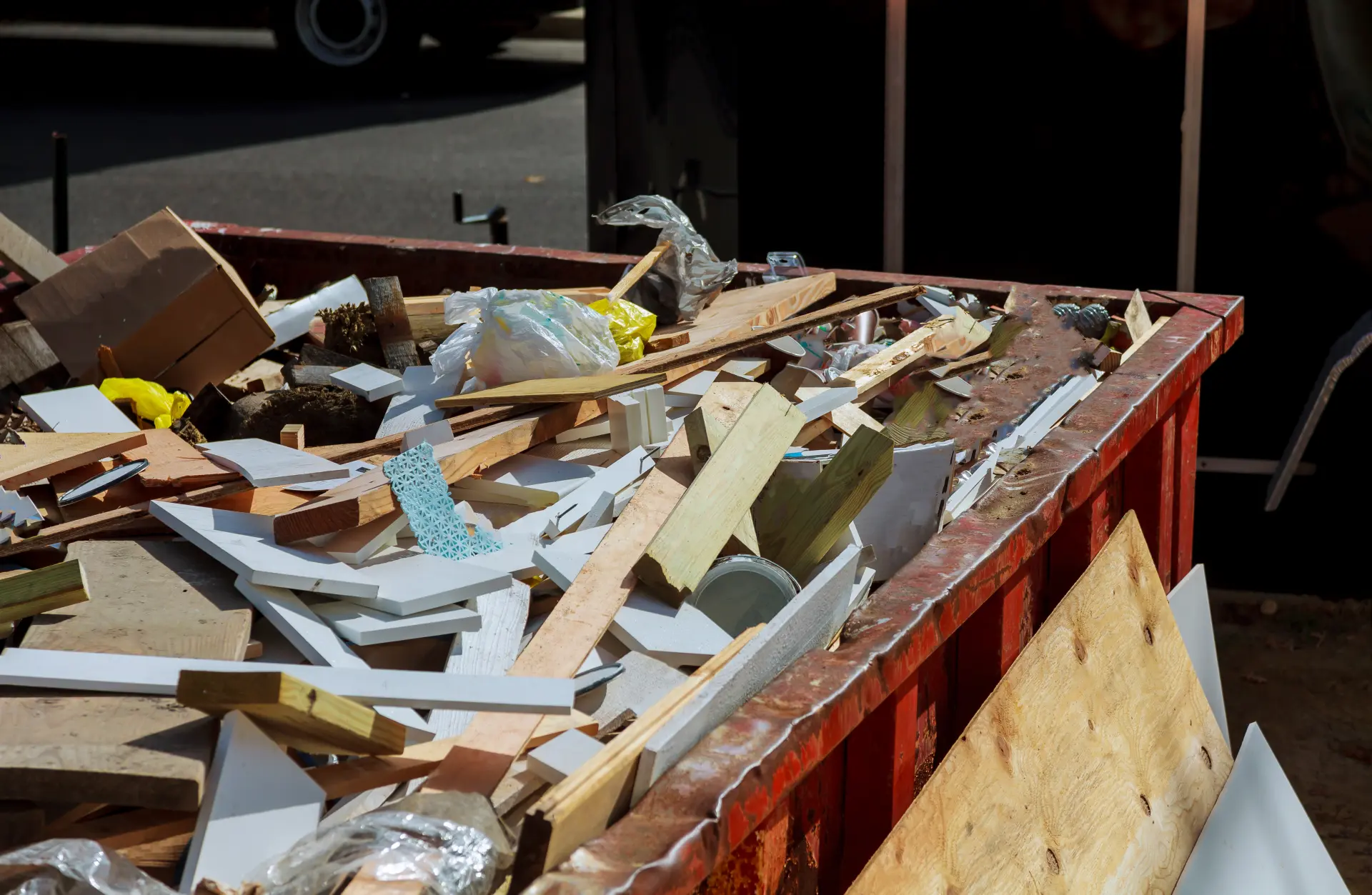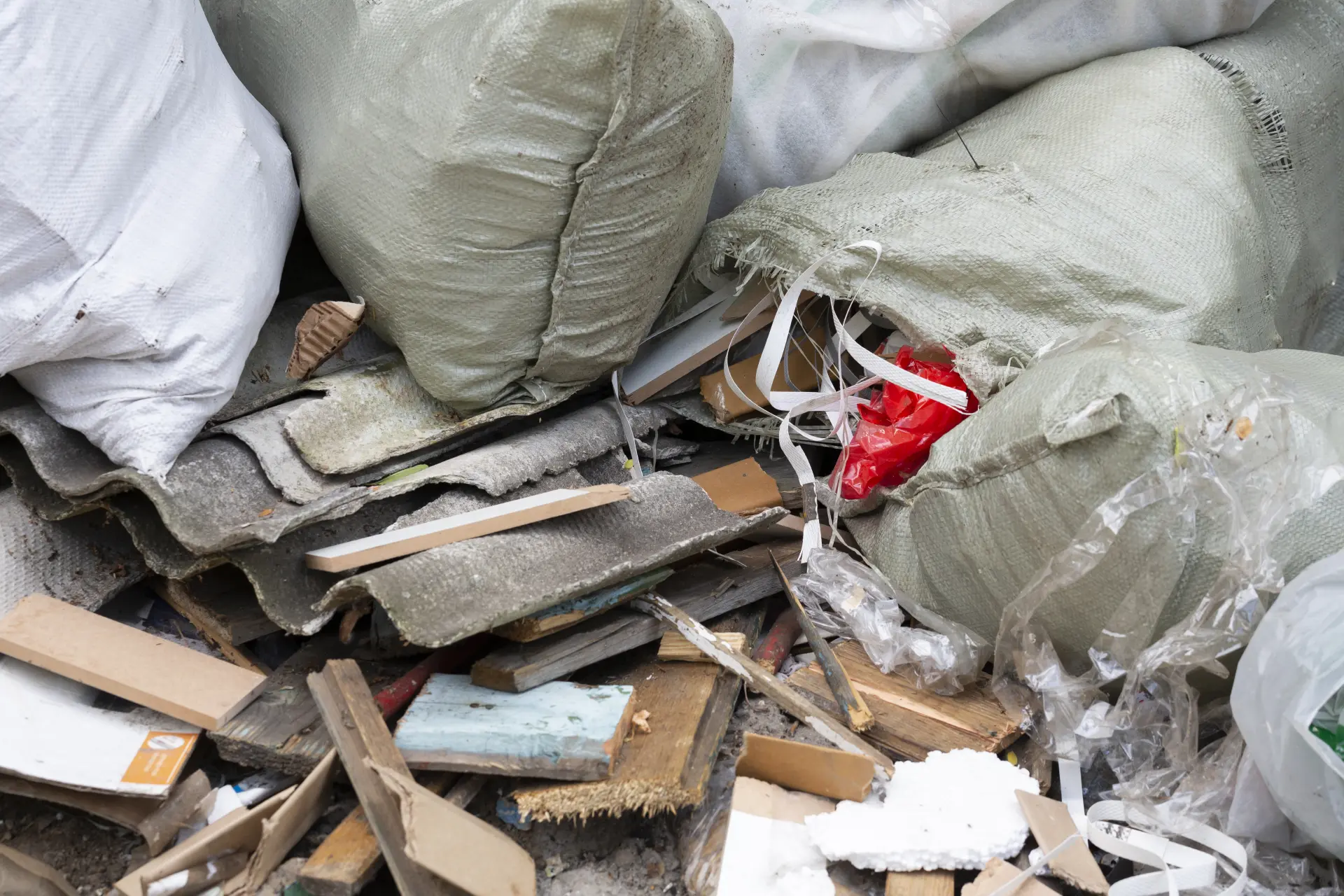Just finished some building work? Before you admire the results, make sure the leftover waste doesn’t become a problem.
In this article, we’ll cover the hidden dangers of building waste and how to deal with it safely and legally.
What Is Building Waste?
Building waste includes anything left over from construction, repair, or renovation work. This can mean bricks, plaster, wood, metal, plastic sheeting, insulation, wiring, or broken tiles.
It also covers things like paint tins, packaging, carpet offcuts, and old fittings. While some items can be recycled or reused, others need special care when it is time to dispose of them.
The important thing is to check what materials you are dealing with before deciding what to do. Leaving them in a pile for later creates more problems than it solves.
Health Hazards from Leftover Waste
Some materials can be harmful to touch, breathe in, or even just be around. Dust from cement and plaster irritates the lungs. Broken wood or glass can cause injuries.
Old insulation may carry mould or release particles that affect the air quality indoors. If sharp items like nails or screws are left lying around, it is easy for someone to trip or step on them.
Children and pets are especially at risk. Waste that gets damp can quickly become a breeding ground for bacteria and pests.

Risks to the Environment
Improperly handled waste does not stay in one place. Wind and rain can spread it, and it may enter soil and water systems. Some materials release harmful substances as they break down, which can damage plants and wildlife.
Plastics, paints, and treated wood often cannot be left in general skips. They must go through proper recycling or disposal services.
Where possible, try to reuse or recycle anything still in good condition. Leftover tiles, bricks, and timber can often find a second life with a local project or community group.

Legal Trouble for Builders and Homeowners
Building waste that is not cleared properly may result in legal action. In the UK, both contractors and homeowners can be fined for fly-tipping or failing to manage site waste correctly.
You are legally required to check that anyone removing your waste is a licensed carrier. If they dispose of it illegally, you may still be held responsible.
It also helps to keep records. Invoices, collection slips, or recycling centre receipts show that you followed the correct process.
How to Clear Waste the Right Way
Start by separating materials into what can be reused, what can be recycled, and what needs to be disposed of properly. Most local councils offer guidance on where different types of building waste should go.
Check if your area has dedicated facilities for items like plasterboard, treated timber, or electrical parts. Avoid mixing hazardous materials with general rubbish.
Hiring a professional builders waste collection service can save time and make sure everything is handled safely. This also helps you stay compliant with local rules and avoid mistakes.
Look for a company that focuses on responsible recycling and landfill reduction. The aim is not just to clear the mess, but to do it in the right way.
Need help clearing leftover building materials? Clear It Away offers fast, reliable Builders Waste Collection in Maidstone and Kent. Our team handles everything from rubble and timber to fittings and packaging, so you do not have to.


